- Home
- Graham Hancock
Magicians of the Gods: The Forgotten Wisdom of Earth's Lost Civilization Page 14
Magicians of the Gods: The Forgotten Wisdom of Earth's Lost Civilization Read online
Page 14
In other translations the phrase “the serpent in the river, and winter” is given as “a great serpent and Winter” and, alternatively, as “a mighty serpent and snow.”19
Again … you get the idea. The metaphor that is being repeatedly driven home here is that of the mighty serpent who springs from the sky down to the earth, who penetrates the earth, and who brings a prolonged winter upon the world so severe that it is “dark” (“most turbid, opaque” according to some translations20) at midday, and even the fleeting summer months are too cold for human life. Once again, the whole scenario seems very accurately to describe the terrible conditions that would have afflicted the world after the Younger Dryas comet spread its trail of destruction across at least 50 million square kilometers, brought on “a vehement destroying frost” and threw such quantities of dust into the upper atmosphere, together with smoke from the continent-wide wildfires sparked off by airbursts and superheated ejecta, that a turbid, opaque darkness would indeed have filled the skies, reflecting back the sun’s rays and perpetuating something very like a nuclear winter for centuries.
The Zoroastrian texts leave us in no doubt that these conditions posed a deadly threat to the future survival of civilization. It was for this reason that Ahura Mazda came to Yima with his warning and his instruction to build an underground shelter where some remnant of humanity could take refuge, keeping safe the seeds of all animals and plants, until the dire winter had passed and spring returned to the world. Moreover the account reveals very little that seems “mythical,” or that obviously derives from flights of religious fancy. Rather the whole thing has about it an atmosphere of hard-headed practical planning that adds a chilling note of veracity.
For example the admonition that deformed, impotent, lunatic and leprous people should be kept out of the Vara sounds a lot like eugenics, a distasteful policy to be sure, but one that might be implemented if the survival of the human race was at stake and there was limited space available in the refuge. For the same reasons it is not surprising that only the seeds of “the greatest, best and finest” kinds of trees, fruits and vegetables, those that are “fullest of food and sweetest of odor” are to be brought to the Vara. Why waste space on anything but the best?
Also although it is certain that a number of carefully selected people were to be admitted to the Vara, perhaps as caretakers and managers of the project, and as future breeding stock, the emphasis throughout is on seeds—which in the case of human beings would be sperm from the males and eggs from the females. So when we read that the Vara is to be constructed in three subterranean levels, each smaller than the one above, each with its own system of criss-crossing “streets,” it is legitimate to wonder whether some kind of storage system, perhaps with ranks of shelves arranged in criss-crossing aisles, might not really be what is meant here:
In the largest part of the place thou shalt make nine streets, six in the middle part, three in the smallest. To the streets of the largest part thou shalt bring a thousand seeds of men and women; to the streets of the middle part, six hundred; to the streets of the smallest part, three hundred.21
If it seems fanciful to imagine that we might, in an almost high-tech sense, be looking at the specifications of a seed bank here, then how are we to assess other “technological” aspects of the Vara—for example its lighting system? As well as making a door to the place, and sealing it up with the golden ring already given to him by Ahura Mazda, Yima is also to fashion “a window, self-shining within.”22 When Yima asks for clarification as to the nature of this “self-shining” window Ahura Mazda tells him cryptically, “There are uncreated lights and created lights.” The former are the stars, the moon and the sun, which will not be seen from within the confines of the Vara during the long winter, but the latter are “artificial lights” which “shine from below.”23
Yima did as he was instructed and completed the Vara which, thereafter, “glowed with its own light.”24 That accomplished, he then:
made waters flow in a bed a mile long; there he settled birds, by the evergreen banks that bear never-failing food. There he established dwelling places, consisting of a house with a balcony, a courtyard and a gallery …25
There, too, we are reminded, in accord with the commands of the god,
he brought the seeds of men and women … There he brought the seeds of every kind of tree [and] … every kind of fruit … All those seeds he brought, two of every kind, to be kept inexhaustible there, so long as those men shall stay in the Vara …26
Finally, we learn that:
every fortieth year, to every couple two are born, a male and a female. And thus it is for every sort of cattle. And the men in the Vara, which Yima made, live the happiest life.27
Interestingly the translator explains, in a footnote drawn from various ancient learned commentaries on the text, that the human inhabitants of the Vara “live there for 150 years; some say they never die.”28 Moreover, and particularly intriguing, the births of offspring to every couple do not result from sexual union but “from the seeds deposited in the Vara.”29
Other hints of a mysterious lost technology connected to Yima include a miraculous cup in which he could see everything that was happening anywhere in the world and a jeweled glass throne (sometimes described as “a glass chariot”) that was capable of flight.30
Flood and rain
As well as a climate catastrophe in the form of an overnight reversion to peak Ice Age cold, we also know that the Younger Dryas involved extensive global flooding as a large fraction of the North American ice cap melted and poured into the world ocean. It is therefore noteworthy that the Zoroastrian texts speak not only of the “vehement, destroying frost” of a global winter but also of an associated flood accompanied by heavy precipitation, in which:
Every single drop of rain became as big as a bowl and the water stood the height of a man over the whole of this earth.31
On the other side of the world and much closer to the North American epicenter of the cataclysm, the Popol Vuh, an original document of the ancient Quiche Maya of Guatemala, based on pre-conquest sources, also speaks of a flood and associates it with “much hail, black rain and mist, and indescribable cold.”32 It says, in a remarkable echo of the Zoroastrian tradition, that this was a period when “it was cloudy and twilight all over the world … The faces of the sun and the moon were covered.”33 Other Maya sources confirm that these strange and terrible phenomena were experienced by mankind “in the time of the ancients. The earth darkened … It happened that the sun was still bright and clear. Then, at midday, it got dark…”34 Sunlight was not seen again “until the twenty-sixth year after the flood.”35
Returning to the Middle East, the famous account of the Hebrew patriarch Noah and the great Ark in which he rides out the flood commands attention. It is obvious that there are many parallels with the story of Yima and his Vara. The Vara, after all, is a means of surviving a terrible and devastating winter which will destroy every living creature by enchaining the earth in a freezing trap of ice and snow. The Ark, likewise, is a means of surviving a terrible and devastating flood which will destroy every living creature by drowning the world in water. In both cases a deity—Ahura Mazda in the case of the Zoroastrian tradition, the God Yahweh in the case of the Hebrew tradition—intervenes to give advance warning to a good and pure man to prepare for the coming cataclysm. In each case the essence of the project is to preserve the seeds, or the breeding pairs, of all life:
And of every living thing of all flesh, two of every sort shalt thou bring into the Ark, to keep them alive with thee; they shall be male and female.
Of fowls after their kind, and of cattle after their kind, of every creeping thing of the earth after his kind, two of every sort shall come unto thee, to keep them alive.36
Easily missed, but noteworthy, is the fact that Noah’s Ark, like Yima’s Vara, is to have a “window,” is to be closed with a “door” and is to consist of three levels:
A window shalt thou
make to the Ark, and in a cubit shalt thou finish it above; and the door of the Ark shalt thou set in the side thereof; with lower, second, and third stories shalt thou make it.37
Last but not least, there are hints of a lost lighting technology in Noah’s Ark that parallel the references to the “artificial lights” in the Vara. In The Legends of the Jews, Louis Ginzberg’s remarkable and comprehensive compilation of ancient stories and traditions connected to the Hebrew Bible, we read that the whole journey of the Ark, “during the year of the flood,” was conducted in darkness both by day and by night:
All the time it lasted, the sun and the moon shed no light …38
However just like the “self-shining window” of the Vara:
The Ark was illuminated by a precious stone, the light of which was more brilliant by night than by day, so enabling Noah to distinguish between day and night.39
Underground cities
Noah’s Ark, as is well known, is said to have ended its journey on the slopes of Mount Ararat, the symbolic heartland of ancient Armenia but now, as a result of wars in the early twentieth century, located within the modern state of Turkey. Turkey, in turn, shares a border with Iran—ancient Persia—from which the accounts of Yima’s Vara come down to us.
Figure 24
It is therefore intriguing that Turkey’s Cappadocia region has a very large number of ancient underground structures hewn out of solid rock and usually, like the Vara, consisting of multiple levels stacked one above the other. These underground “cities,” as they are known, include the eerie and spectacular site of Derinkuyu, which I was able to visit in 2013. Lying beneath a modern town of the same name, eight of its levels are presently open to the public, although further levels remain closed off below and, astonishingly, a subterranean tunnel several kilometers in length connects it to another similar hypogeum at Kaymakli.
Entering Derinkuyu was like crossing some invisible barrier into an unexpected netherworld. One minute I was standing in bright sunshine; the next, after I had ducked into the cool, dank, dimly-lit system of tunnels and galleries (no self-shining windows now; only low wattage electric light), I felt I had been transported to a realm carved out by mythical dwarves at the dawn of time. In places the tunnels are low and narrow so that one must stoop and walk in single file between walls stained and blackened with ancient smoke and overgrown here and there with green mold. At regular intervals, slid back into deep recesses, I passed hulking megalithic doors, shaped like millstones, 5 to 6 feet (1.5 to 1.8 meters) in diameter and weighing close to half a ton. These were clearly designed to be rolled out to block access. Stairways and steep ramps led down from level to level and, although all the levels were interconnected, the rolling stone doors could be used to isolate them from one another when needed.
I noticed a remarkable system of plunging, sheer-sided ventilation shafts connecting the deepest levels with the surface—and doing so to such good effect that the gusts of fresh air were still palpable 80 meters (260 feet) or more beneath the ground. In some places the passageway I was following would debouch into a junction where tunnels branched off in several directions and more stairways led down to even lower levels. And here and there, now to one side of the passageway, now to the other, sometimes accessed by means of holes cut in the wall, sometimes through full-sized doorways, lay small low-ceilinged grottos in which even a few people sitting together would have felt cramped. But sometimes those doors would lead into interconnected networks of chambers and passages and sometimes they would open out suddenly into lofty halls and spacious rooms with barrel-vault ceilings looming high overhead, supported on monolithic columns hewn from the living rock.
The whole place, in short, is a complex and cunning labyrinth on an immense scale—a work of astonishing architectural complexity that would be impressive if it had been built above ground, but that is utterly breathtaking when one considers that it all had to be mined, chiseled, hammered, cut and gouged out of the volcanic bedrock. Later, studying a plan, I realized that this vast hypogeum, looking in cross-section like a gigantic rabbit warren and extending over an area of more than 4 square kilometers,40 lay underfoot wherever one went in the modern town of Derinkuyu, streets beneath streets, rooms beneath rooms, a secret antipodal city of unknown antiquity and of unknown purpose but certainly the product of immense ingenuity, determination and skill.
And Derinkuyu is just one of two hundred such subterranean complexes, each containing a minimum of two levels (with around forty containing three levels or more) that have been identified in Turkey in the area between Kayseri and Nevsehir.41 Moreover, new discoveries are constantly being made. Derinkuyu itself was found in 1963 after builders renovating the cellar of a modern home broke through to an ancient passageway below. And most recently, in 2014, workers preparing the ground for a new housing project at Nevsehir, an hour’s drive north of Derinkuyu, stumbled upon yet another unsuspected hypogeum. Archaeologists were called in and it was quickly realized that this one was bigger than any others so far known. As Hasan Unver, Mayor of Nevsehir put it, Derinkuyu and Kaymakli are little more than “kitchens” when compared to the newly-explored site. “It is not a known underground city,” added Mehmet Ergun Turan, head of Turkey’s Housing Development Administration. “Tunnel passages of seven kilometers are being discussed. Naturally, when the discovery was made, we stopped the construction we were planning to do in the area.”42
Several commentators immediately speculated that the newly discovered site might be “5,000 years old,”43 but there is no basis for this—or really for any date. All we can say for sure is that the earliest surviving historical mention of Turkey’s underground cities is found in the Anabapsis of the Greek historian Xenophon written in the fourth century BC44—so they are older than that.
But the question is, how much older?
As the reader will recall from Chapter One, there is no objective way to date structures made entirely of rock. What archaeologists look for, therefore, are organic materials that can be carbon dated. To be useful, however, these organic materials must be excavated from locations—under a megalith that has never been moved, for example, or in the original mortar in a joint between two stone blocks—that allow reasonable deductions to be made about the date the associated structural elements were put in place.
This is why the mysterious decision by the builders of Göbekli Tepe to bury the megalithic enclosures there has been so helpful to archaeology. Once buried they stayed buried and organic materials in the fill can thus be used to make valuable inferences about their age. In many other sites, by contrast, there is the possibility that the intrusion of later organic materials will give a falsely young date, and in some—the underground cities of Turkey being a prime example—no reliable dating can be done. This is because the sites were used, reused and indeed repurposed many times down the ages by many different peoples, with organic materials being introduced on every occasion, thus making it impossible to draw any inferences about the epoch of their original construction.
The general view of archaeologists is that the underground structures were originally developed in the seventh or eighth centuries BC by an Indo-European people called the Phrygians who lived in Cappadocia at the time. The theory is that the Phrygians began the project by widening and deepening natural caves and tunnels that already existed in the volcanic rock, making use of the spaces they created for storage and possibly as places of refuge from attackers.
By Roman times, with the Phrygians long gone, the inhabitants of the area were Greek-speaking Christians who further developed and expanded the underground caverns, rededicating some of the rooms as chapels and leaving inscriptions in Greek, some of which survive to this day. In the Byzantine era, from the eighth to the twelfth centuries AD, the Eastern Roman Empire was locked in wars with newly Islamicized Arabs and the underground cities became places of refuge again—a function they continued to serve during the Mongol invasions of the fourteenth century AD. Later still, Greek Christians us
ed the cities to escape persecution at the hands of Turkish Muslim rulers, and this practice continued into the twentieth century when the structures finally fell into disuse after the truce and population exchange between Greece and Turkey in 1923.45
With such a checkered history it is easy to see why the underground cities cannot be dated using objective archaeological techniques. Moreover the vast effort that went into their excavation out of solid rock, and their sophisticated ventilation systems, speak of powerful long-term motives far beyond the limited and temporary need for shelter from attackers. With this in mind let us consider a scenario in which the Phrygians, favored for no good reason by archaeologists as the first makers of the cities, were themselves just one of the many later cultures to make use of them. It is perfectly possible that this is the case and, if so, then it is also possible that these extraordinary underground structures might date back to a time long before the Phrygians—perhaps even as far back as the “fatal winters” of the Younger Dryas that set in around 12,800 years ago.
There is no proof of this, of course. Nonetheless Turkish historian and archaeologist Omer Demir, author of Cappadocia: Cradle of History, is of the opinion that Derinkuyu does in fact date back to the Palaeolithic.46 His argument is based partly on the notion that it already existed in Phrygian times,47 partly on stylistic differences between the upper (older) levels and the lower (younger) levels48 and partly on the fact that marks of the implements used to cut the rock have worn completely away in the upper levels but are still visible in the lower levels:
It is necessary for a long period of time to pass for the chisel marks to disappear. This means that there was quite a time difference between the years of construction of the first stories and the last stories.49
Demir also suggests that the huge quantities of rock excavated to make the underground city—which are nowhere in evidence in the vicinity today—were dumped into local streams and carried off.50 In one of these streams, the Sognali, at a distance of 26 kilometers (16 miles) from Derinkuyu, hand-axes, rock-chips and other Palaeolithic artifacts were found.51

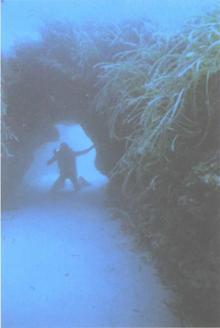 Underworld: The Mysterious Origins of Civilization
Underworld: The Mysterious Origins of Civilization The Master Game: Unmasking the Secret Rulers of the World
The Master Game: Unmasking the Secret Rulers of the World America Before
America Before Entangled
Entangled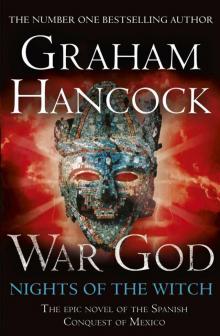 War God: Nights of the Witch
War God: Nights of the Witch War God: Return of the Plumed Serpent
War God: Return of the Plumed Serpent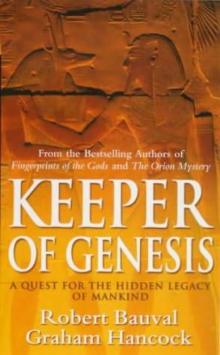 The Message of the Sphinx AKA Keeper of Genesis
The Message of the Sphinx AKA Keeper of Genesis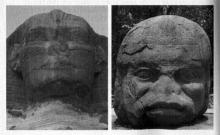 Fingerprints of the Gods
Fingerprints of the Gods The Sign and the Seal
The Sign and the Seal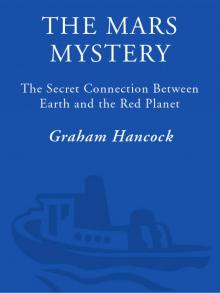 The Mars Mystery: The Secret Connection Between Earth and the Red Planet
The Mars Mystery: The Secret Connection Between Earth and the Red Planet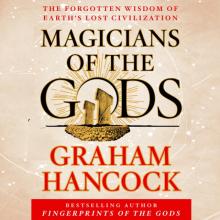 Magicians of the Gods: The Forgotten Wisdom of Earth's Lost Civilization
Magicians of the Gods: The Forgotten Wisdom of Earth's Lost Civilization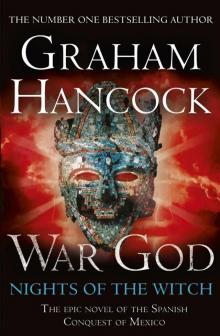 War God
War God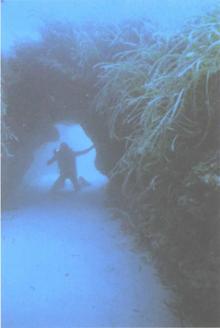 Underworld
Underworld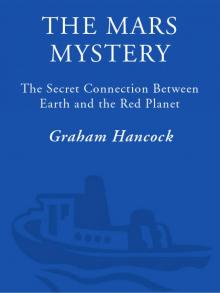 The Mars Mystery
The Mars Mystery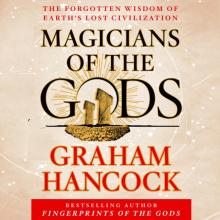 Magicians of the Gods
Magicians of the Gods The Master Game
The Master Game